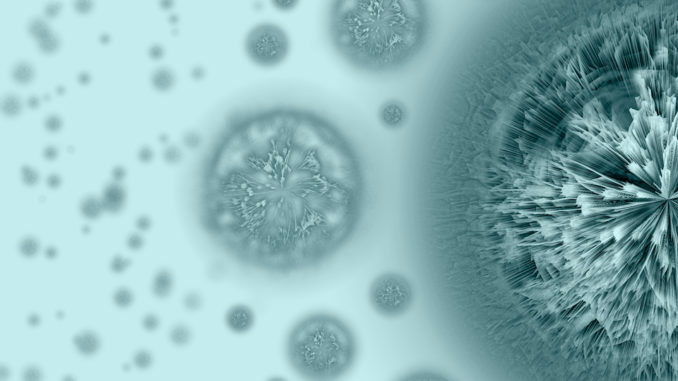
The human microbiome is often described as an ‘ecosystem’, evoking a complex collection of organisms that are alive and dynamic. So when considering strategies for modulating the human microbiome to prevent or treat a disease, it’s natural to think that live microorganisms are the prime candidates.
But a different category of microbiome-based products is now taking shape. While the regulation for Live Biotherapeutic Products (LBPs) (one of a number of nascent types of products intended to prevent or treat disease by way of the microbiome) is being advanced through the work of the Pharmabiotic Research Institute (PRI) (www.pharmabiotic.org)—a non-profit industry group tasked with clarifying the regulatory and scientific requirements for microbiome-based drug products in the EU—stakeholders have identified a category of products similar to LBPs except in one crucial way: the microbes making up the product are dead or inactivated. At present, these ‘non-living biotherapeutic products’, as they’ve come to be called, are an emerging category of drug products with a unique set of challenges.
Non-living biotherapeutic products encompass drugs (or drug candidates) containing microorganisms that have been killed, inactivated, stabilized, or lysed, and are intended to cure or prevent a disease. Since the category excludes microbiome-associated molecules such as metabolites, the ‘non-living’ part of the label rather means, more specifically, ‘no longer living’—microorganisms that do not remain alive or metabolically active.
Similarly to LBPs, there are also instances of non-living biotherapeutic products having cleared regulatory hurdles and been registered as drugs for decades in Europe. Even so, however, the category to date has not been well-defined, and it’s only with the past decade’s significant advances in microbiome science and drug development that the spotlight has turned to non-living biotherapeutics as distinct from both LBPs and traditional drugs.
Bringing a new category into focus
Adare Pharmaceuticals is a company with an established product that includes two heat treated (non-living) strains of bacteria, proven efficacious for a specific condition and approved as a drug in more than 35 countries.
Adare’s Vice-President and Business Leader, Microbiome, Frédéric Appert, says the company quite recently turned its attention to the microbiome field, hoping to crystallize how its product was different from other kinds of drug products.
“Previously, we had no category, and that’s a problem because in our case, when we wanted to talk to healthcare professionals, they needed a label,” says Appert. “The terms postbiotic, prebiotic, probiotic, and synbiotic tend to be poor or incomplete descriptions.”
“Defining a category of non-living biotherapeutics is very important.”
It’s a first step, he believes, in bringing together companies with common interests and clearing a path for these potentially valuable therapeutic tools.
Advantages of non-living products
SkinBio Therapeutics is a UK-based company currently developing a non-living product focused on the skin microbiome. CSO Dr. Catherine O’Neill says that, from the beginning, the team had certainty about the type of product they wished to advance.
“We screened a number of lactobacilli and we found a particular bacterium that had alot of activities on skin, so we thought we could develop this as a therapeutic,” she says.“But we made a strategic decision very early on that we were going to use this bacterium not as a live organism but as a lysate– basically,an extract.”
O’Neill cites two main reasons for the decision.
“First of all,there were safety considerations. So although probiotic bacteria are considered to be safe, that’s only by the oral route, and we didn’t know how safe they would be if we started rubbing them in open wounds, for example, or eczematous skin…because any safe bacteria, if it gets into the bloodstream, can be dangerous.”
The second reason for pursuing development of a non-living bacterial product involved the very practical problems of formulating and delivering the product for administration at different skin sites.O’Neill says, “Formulating live bacteria and keeping them alive is really quite challenging. So we considered that an extract would be much easier to formulate into creams and lotions and gels for the skin.”
Appert underlines that stability is one of the practical advantages of non-living products:
“With living biotherapeutics, there’s always the question: even if you guarantee that you have 10 billion living bacteria on day one, after one year on the shelf of the pharmacy, is it still the same? Likewise, how many of these survive the harsh and acidic conditions of passage through the stomach and then the digestive process is unknown.”
But as with any product, Appert continues, there are practical difficulties, too.
“Reliable and consistent production is a challenge. We produce a product that has a pharmaceutical registration under GMP (Good Manufacturing Practices) conditions and we have a consistent, replicable, qualitative manufacturing process. This is not typical and is not at all trivial,” he says.
Efficacy and dose
Appert says, on the one hand, proving efficacy for their product was not so different from doing so for a traditional drug: they demonstrated both safety and efficacy in two well-controlled clinical studies and then by going through the approval process with the regulatory authorities. But more generally, finding the right dose remains a huge challenge for this category of product.
“Optimal dose and mechanism are hard to define,” he comments. “It is probable that the activity of non-living bacteria is closely related to [interactions] with the host, particularly the immune system of the host, and these systems are multi-factorial.”
Unravelling multiple mechanismsof action
Efficacy, of course, is not the only relevant parameter when it comes to developing and registering a drug. O’Neill says, “If you’re going along the pharmaceutical route, mode of action and mechanistic work is quite important.”
She reports that she and her colleagues at SkinBio Therapeutics spend a lot of time and effort trying to understand the chemistry of the product.
“We figure if we’ve got as much mechanism of action data as we can possibly muster, that’s really going to help the regulators make decisions,” she says. “With these sorts of products, it’s not going to be like a single-molecule drug, where it’s pretty obvious what its mode of action is. There could be multi-target effects.”
Appert says,
“In the case of living organisms and non-living organisms, the way a product works can be quite hard to determine. It is a challenge to apply classical techniques to elucidate a mechanism of action, i.e. a single molecule acting at a single molecular target, for these types of products.”
He notes,
“In our case, we still have a lot to discover in terms of how it works. We have four different mechanisms of action that have been identified. It’s not just one molecule that fits into a receptor, it’s probably many things: immune system modulation; there are some ingredients or components of the product that appear to stimulate other bacteria, meaning there is an impact on other bacteria in the microbiome of the host. There are undoubtedly multiple factors at [play], and it is hard to have a complete understanding of the mechanisms.”
“We are now in the fourth year of a research collaboration with the Alimentary Pharmabiotic Centre at University College Cork, one of the premier microbiome research centers in the world,” Appert continues. “[Interestingly, we are doing] really cutting-edge studies using modern techniques in a world-leading institution [and] we are finding that ultimately, as in all biochemistry, it is about molecules; in this research we are beginning to identify mechanisms and molecules, which is a very exciting development for us.”
Adapting regulations to suit
Certainly, for regulators, a non-living product seems like less of an ‘unknown’ than a living product. Yet O’Neill says it’s not yet clear whether the existing regulations in Europe will adequately deal with non-living biotherapeutic drug products. She says this uncertainty played into the company’s decision to initially develop the product as a cosmetic.
“There were very good reasons why our bacterial lysates would be a good cosmetic,” she says. “Also,you can use it on humans in a cosmetic study without having to climb very many regulatory hills. All you have to show for a cosmetic study in humans is that it’s safe.”
Appert acknowledges that although the Adare drug product has managed to meet regulatory requirements and is approved as a pharmaceutical in 38 countries, there will still be a need for regulations to adapt in the future, as more of these products advance.
He says,
“These products are different from single chemical entities, and the requirements for chemical drugs are not well suited to living or non-living biotherapeutics.”
Shaping a future for the category
Recently, the PRI brought together stakeholders across Europe for a Non-Living Biotherapeutic Products Task Group to discuss key challenges pertaining to ‘the development and registration of medicinal products containing dead/inactivated/stabilized/lysed microorganisms.’ High on the agenda was defining this category of products and outlining the unique challenges for development and regulation, to pave the way for the products to come. Those at the organization point out, “regulatory challenges not foreseen by the developers may arise in the near future.”
Appert, who participated in the December meeting, notes,
“There are relatively few others in the space today, and it was good to [see] that others are interested in moving this exciting new field forward. There is an opportunity for change. There is every reason to believe that non-living biotherapeutics can be just as effective as living biotherapeutics,” he says.
Organisations who wish to participate in further discussions about non-living biotherapeutic products are encouraged to contact the PRI: contact@pharmabiotic.org

